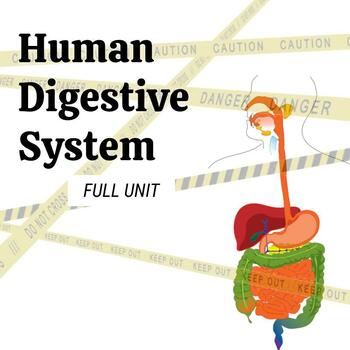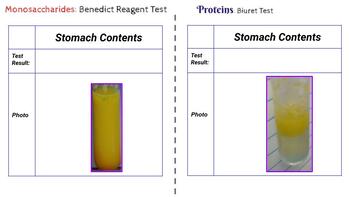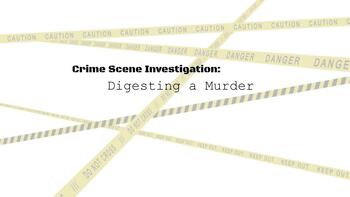Human Digestive System - Middle School Science FULL UNIT
- Google Drive™ folder

Products in this Bundle (4)
Description
Progression of Guiding Questions:
- How does our body turn FOOD into POOP?
- How does our food fuel our cells?
- What is special about each biomolecule?
- How can you use the biomolecule tests to solve a “crime”?
Progression of Learning Targets:
- I can analyze the structure and function of organs that make up the human digestive system.
- I can evaluate the different biomolecules in food and demonstrate how they are absorbed by the digestive system.
- I can investigate the uniqueness of carbohydrates which our body uses to keep us alive!
- I can investigate an unknown sample of food to determine which biomolecules are present.
(Green Circle) Playlist
Students gain a general understanding of the function of the Human Digestive System. They identify the organs and research the physiology of each organ within the Human Digestive System. And they always “love” learning about different consistencies of POOP! And it makes for some fascinating classroom conversations as you bring attention to the connection between consistency and hydration, allergies, and more!
[Blue Square] Playlist
Students start with an experiment to learn about diffusion which they will connect to the function of our microvilli in our intestines. They will use an Amoeba Sisters video to compare and contrast the properties of the 4 Biomolecules (Carbohydrates, Lipids, Proteins, and Nucleic Acids) and then conduct research to list examples of their favorite foods that fall into each category. Lastly students will follow the digestion of a cookie throughout a human digestive system using a University of Utah, Learn Genetics, resource.
<Black DIamond> Playlist
Students start by learning about Metabolism using a khan-academy-style notetaking video. Then they will explore the nutritional quality of their favorite foods by researching and exploring Nutritional Fact Labels and browsing online databases of food’s nutritional value. As students continue through the playlist they will focus on the digestion of carbohydrates. This will prepare them to conduct the two experiments that close out the playlist. In the two experiments students use Iodine to test for Polysaccharides and Benedict's Reagent to test for Monosaccharides in common food items.
<>Double Black Diamond<> Playlist
Students will complete the 3rd and 4th Biomolecule tests. In this playlist the students will use Biuret Solution to test for Proteins and a pieces of Brown Paper Bag to test for Lipids. When students combine these two experiments with the prior two experiments in the <Black Diamond> Playlist, they will have skills to test for four different food biomolecules. Armed with these skills they will try to solve a “murder”! Grab you blender, and make a slurry to show your students the “stomach chyme” of the “victim”!! They will freak out and get excited to test the sample for each food biomolecule. They will conduct the experiments to test for each biomolecule, collect their data, and use CER format to argue where they believe the victim ate their last meal to “help the detective solve the murder”!
This product contains assignments that lead students toward answering a guiding question via a Learning Target. Students accomplish this by completing digital assignments using Google Docs, Slides, and Forms. They will also use assignments to collect data and add notes into an interactive science notebook. (In my classroom all students have a composition notebook for this purpose). An “end of playlist” formative quiz is also included.
These playlists progress through the Ski Slope Model of Teaching. This resource includes all 4 of the series of tiered playlists that develop student's depth of knowledge as they complete assignments that progress through Bloom's taxonomic hierarchy. The four playlists are, in order; (Green Circle), [Blue Square], <Black Diamond>, and <>Double Black Diamond<> playlists. Each playlist builds upon the one prior and grows in complexity and depth.
This resource contains materials which address aspects of the following Next Generation Science Standards (NGSS): NGSS MS-LS1-1, NGSS MS-LS1-2, NGSS MS-LS1-3, NGSS MS-LS1-7
*These resources have been used in a real-life middle school science classroom with real-life students in Colorado!





